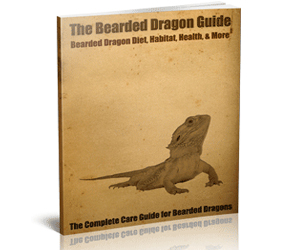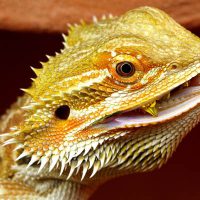Bearded Dragon Care
Bearded Dragons are native to central Australia and are basically desert-dwelling lizards.
Their colour varies from a dull brown or gray to straw/yellow to fiery orange-red. Bearded dragons are a very popular pet. They are extremely adaptable to different habitats, and may be found in woodland, scrubland, and grasslands.
Why should I consider getting a bearded dragon as a pet?
Bearded Dragons are a fantastic choice for first time reptile owners, especially for families with young kids that are searching for a reptilian family member. Beardies are medium sized reptiles growing 18-24 inches in length. They are omnivorous creatures, which means they naturally eat plants and insects. In captivity they often do better on a vegetarian diet.
These lizards make good pets because they do not get too large and eat a variety of foods. Apart from that they are gentle animals that are active during the day. Bearded dragons also have limited requirements that are readily available.
How do I choose a bearded dragon?
It is advisable to look at the bearded dragon carefully to ensure that it has bright and alert eyes. Also remember to check its length and make sure that it does not have any sores, deformities or burns.
Here are things to consider while caring for your bearded dragon:
Housing
The enclosures for bearded dragons should be large with the minimum size for an adult being a 50-gallon terrarium. When housing a group of adult dragons, ensure that they are housed in large enclosure and it is provided with plenty of logs for basking. You could use glass because this material allows for optimum brightness as well as vision. Take care not to house young females and males together as they might mate and then run into complications concerned with egg binding.
Bearded Dragon Substrate
You can use wheat bran for bearded dragons that are above 6 months of age. To prevent problems with impaction, use newspaper or paper towels. Of course while using this, replace the old paper every night to remove hidden crickets as they can harm young dragons. You could also opt for basking logs to allow your precious dragon to feel secure and thermo regulate. You can also add just the right amount of color and decoration using fake plants and decorative rocks!
Food
Since bearded dragons are omnivorous they can be feed proteins as well as vegetation.
Bearded dragons also require a variety of greens, so you could feed them with collard greens, red leaf lettuce, green leaf lettuce, mustard greens, turnip greens and dandelion greens. Apart from the greens mentioned above you could also feed your dragon carrots, squash, peas, corn and sweet potatoes.
Meal worms are a great source of protein however in large amounts it is hard for the bearded dragon to digest and may cause digestion problems.
Any food items presented to your Bearded Dragons should be no bigger than the space between their eyes.
Supplements
Some of the supplements that a bearded dragon requires are Calcium, D3 and Vitamins. It is important to remember that the supplementation depends on the bulbs you use, the amount of natural light it receives and what you feed it. Keeping all this in mind, it is advisable to meet your vet to find a schedule that suits the needs of your dragon.
Heating and Lighting
While setting the temperature, ensure that the enclosure is provided with a temperature gradient which moves from a hot basking zone to one that is cooler. Keep the basking temperature to over 100 degrees and the cooler zone temperature around 85 degrees. Dragons love bright light, so use active UV/heat or mercury vapour bulbs. Apart from UV light, you can also take your dragon outside in an outdoor basking enclosure as the more natural light they have access to, the less supplements they will require. Do not take your young dragon outside because they might become stressed, it is noteworthy to wait till they are older.
Water Intake
Provide your bearded dragon water in a shallow bowl that has been disinfected once a week. If your precious dragon does not like drinking from the bowl, allow the water to drip slowly into its snout. You could also try wiggling your finger in the water to catch its attention as this lizard loves things that move.
Bathing Routine
It is advisable to bathe your bearded dragon once a week as this not only keeps it clean but also helps in keeping them hydrated and helps them in shedding. Ensure that the bath water you use is just warm and only as deep as your dragon’s chest. While bathing your bearded dragon, remember to always be present and never leave it unattended.



